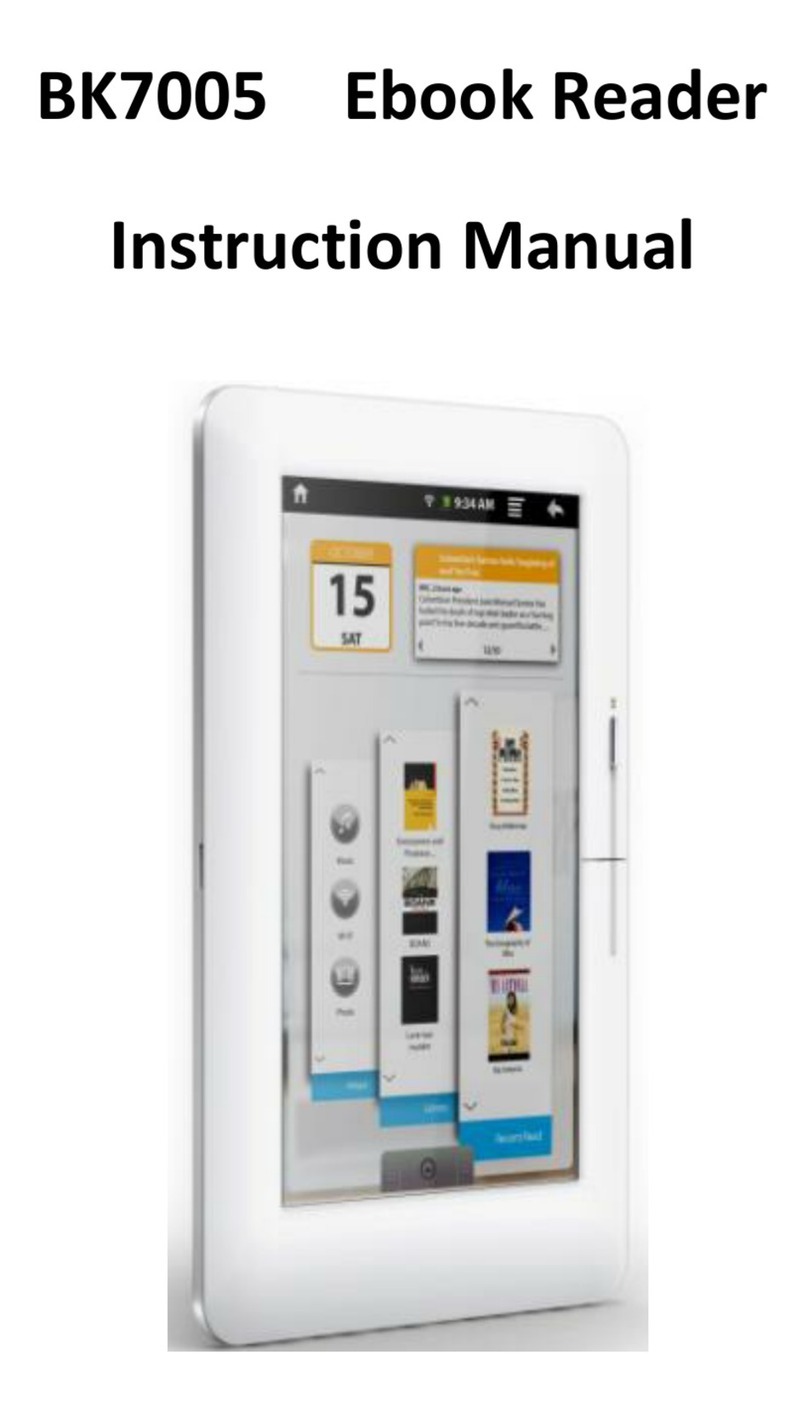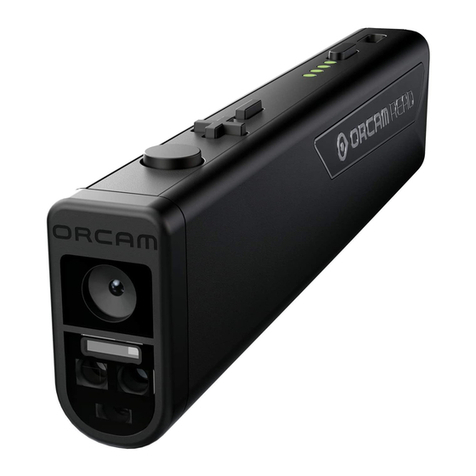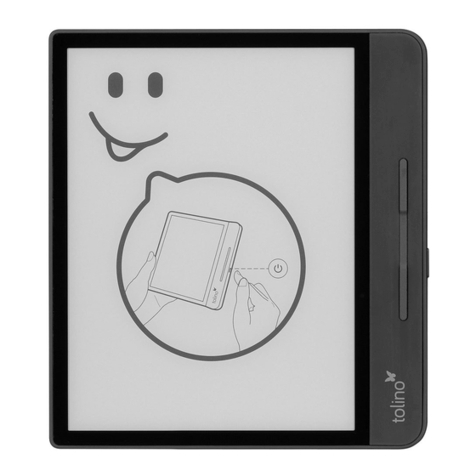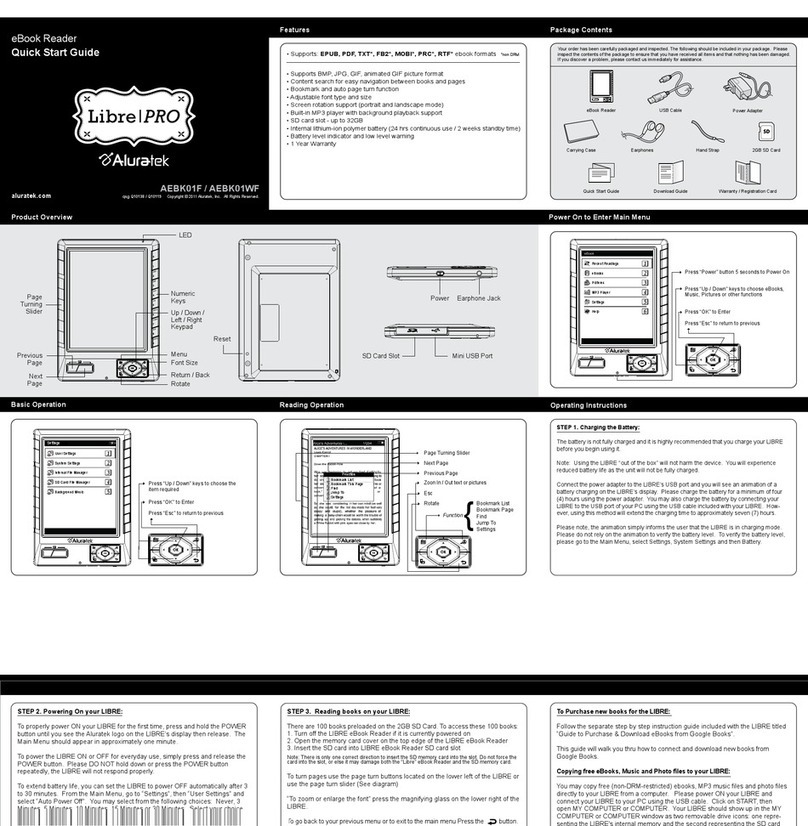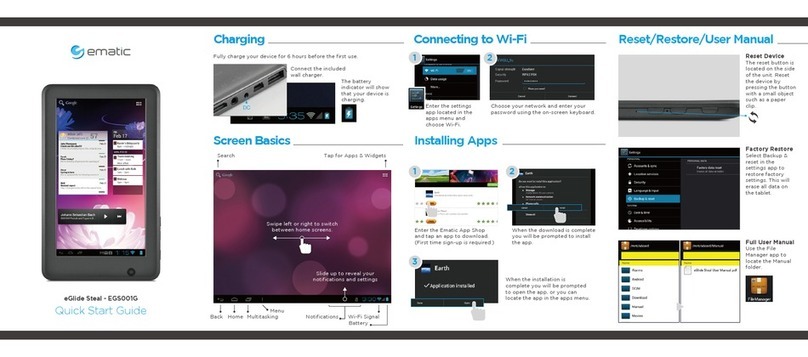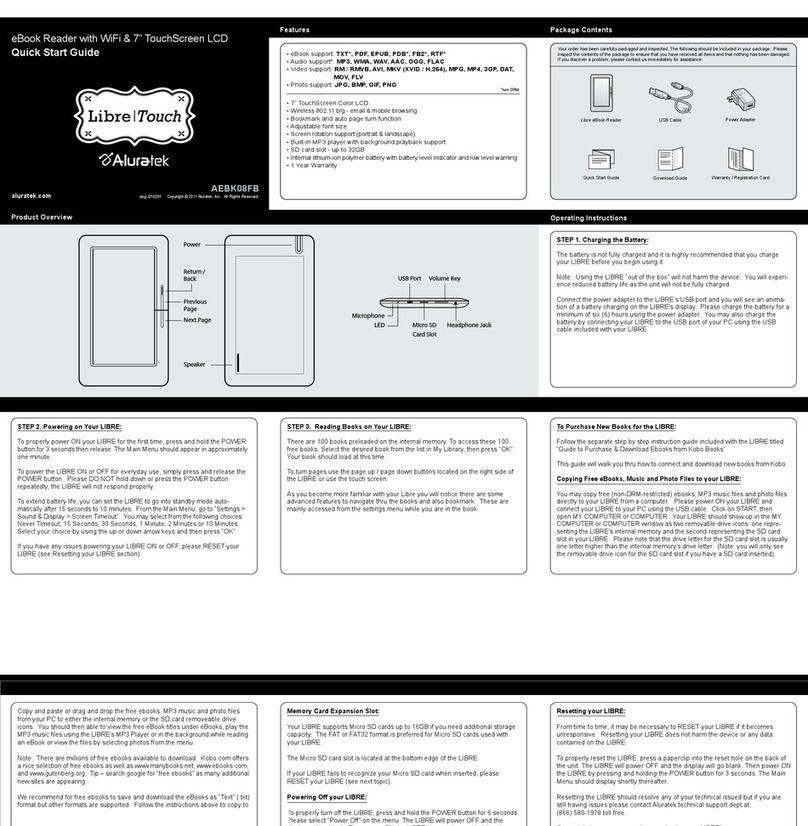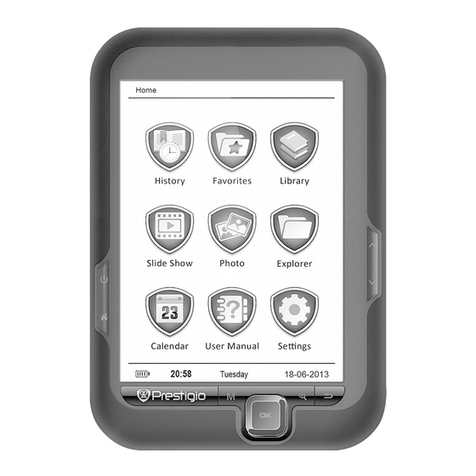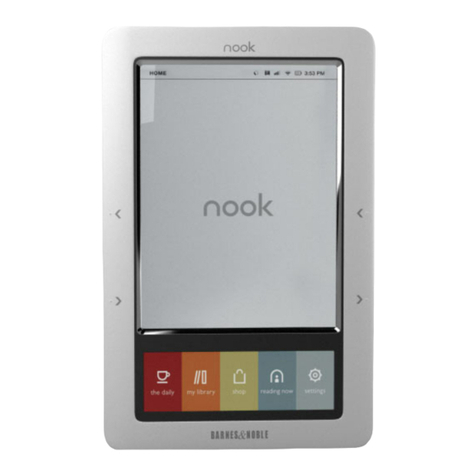Elvox 800T User manual

Art. 800T
Cod. S6I.800.T00 RL. 04 3/2012
Art. 88TL
Art. 88TM
LETTORE PER TRANSPONDER
PROXIMITY READER
LECTEUR POUR TRANSPONDEUR
TRANSPONDERLESER
LECTOR PARA TRANSPONDEDOR
LEITOR TRANSMISSOR
MANUALE PER IL COLLEGAMENTO E L’USO
INSTALLATION AND OPERATION MANUAL
MANUEL POUR LA CONNEXION ET L’EMPLOI
INSTALLATION UND BEDIENUNGSANLEITUNG
MANUAL PARA EL CONEXIONADO Y EL USO
MANUAL DE INSTALAÇÃO E UTILIZAÇÃO
Il prodotto è conforme alla direttiva europea 2004/108/CE, 2006/95/CE e successive.
Product is according to EC Directive 2004/108/CE, 2006/95/CE and following norms.
Le produit est conforme à la directive européenne 2004/108/CE, 2006/95/CE et suivantes.
Das Produkt entspricht den europäischen Richtlinien 2004/108/CE, 2006/95/CE und Nachfolgenden.
El producto es conforme a la directiva europea 2004/108/CE, 2006/95/CE y sucesivas.
O produto está conforme a directiva europeia 2004/108/CE, 2006/95/CE e seguintes.

2
DESCRIZIONE
L’art. 800T è un lettore per chiavi a transponder
art. 88TL, 88TM. Il lettore in presenza di una chia-
ve memorizzata chiude il contatto di un relè pre-
sente al suo interno. Il lettore può essere utilizza-
to singolarmente o su impianti DigiBus, nei quali è
possibile monitorare le attivazioni del lettore stes-
so attraverso il software PC DigiBUS Analyzer2
eDataOrganizer. Le chiavi art. 88TL (tipo tesse-
ra) e 88TM (tipo portachiavi) sono fornite con un
proprio codice unico.
Caratteristiche elettriche/funzionali di base:
Numero massimo chiavi a transponder memo-
rizzabili: 320.
Alimentazione : nominali ( 12 Vcc) range di ali-
mentazione (10 .. 14 Vcc).
Potenza max. assorbita: 1 Watt.
Distanza di lettura : 10 .. 30 mm; ( in funzione
dell’antenna e del transponder TAG utilizzati ).
Contatto relè (N.A. - normalmente aperto):
24Vc.c./c.a. max , 3A max.
Morsetti:
5: positivo alimentazione (12Vcc).
4: negativo alimentazione.
1: un morsetto di comunicazione seriale verso
centralina esterna (o personal computer
tramite l’interfaccia Art. 6952 o Art. 6952/A)
o dispositivo comunque atto a memorizzare
eventuali informazioni relative alla chiave
transponder riconosciuta.
R1-R2:
contatto normalmente aperto (relativo al
relè interno al dispositivo).
I
INSTALLAZIONE
Il lettore per transponder art. 800T puo’ essere
installato in un modulo neutro di targa serie 8000
(Art. 800N) oppure in una targa della serie 1200
con cartellini (Art. 122N, 123N, 12NN, 12N1,
12N2, 12N3, 12N4, 123D). E’ possibile anche
l’inserimemento in abbinamento con una targa
citofonica/ videocitofonica.
A seconda del modello di targa e del tipo di
installazione devono essere scelti gli opportuni
accessori: telaio portamodulo (solo per serie
8000), scatola da incasso o da esterno parete e/o
eventuale cornice.
Nelle Fig. 3 e 5 vengono riportati gli esempi di
installazione del lettore sigolarmente in una targa
serie 8000 o serie 1200.
All’Art. 800T viene fornito con due cartellini di
colore nero per moduli serie 8000 e 1200. Per
l’inserimento e l’estrazione del cartellino agire sul
retro della placca come indicato nelle fig. 4 e 6.
GB
DESCRIPTION
Type 800T is a reader for transponder keys type
88TL, 88TM. The reader in presence of a memori-
zed key closes the contact of a relay present in
the same reader. The reader can be used indivi-
dually or in DIGIBUS installations, where it is pos-
sible to monitor the reader activations through
the software PC DigiBUS Analyzer2 e
DataOrganizer. Keys type 88TL (pass type) and
88TM (key holder type) are supplied with a uni-
que own code.
Basic electrical/functional features:
Maximum transponder key number that can
be stored: 320.
Supply voltage : nominal (12 VDC) tolerance +/- 2
VDC.
Absorbed max. power: 1 Watt.
Reading distance: 10 .. 30 mm; (depending on
the antenna and on TAG transponder used).
Relay contact (N.O. - normally open): 24V
A.C./D.C. max, max 3A.
Terminal block:
5: supply positive (12VDC).
4: supply negative.
1: a terminal of serial communication to an
external control unit (or personal computer
through interface type 6952 or 6952/A) or
a device however fitted to store informa-
tion about the recognized transponder key.
R1-R2:
normally open contact (concerning the
internal relay of the device).
INSTALLATION
The transponder reader art. 800T can be installed
in an 8000 series blank entrance panel module
(Art. 800N) or in a 1200 series entrance panel
with name tags (Art. 122N, 123N, 12NN, 12N1,
12N2, 12N3, 12N4, 123D). It can also be included
in combination with an audio/video entrance
panel. Select the appropriate accessories accor-
ding to the model of the entrance panel and the
type of installation: module-holder frame (for
8000 series only), back box or surface wall-
mounted box and/or frame. Fig. 3 and 5 show
examples of installations of the reader on its own
in an 8000 or 1200 series entrance panel. Art.
800T is supplied with two black name tags for
8000 and 1200 series modules. To insert and
remove the name tag, use the back of the plate
as shown in fig. 4 and 6.

3
INSTALLATION
Le lecteur pour transponder art. 800T peut être
installé dans un module neutre de plaque de rue
série 8000 (Art. 800N) ou bien dans une plaque
de rue de la série 1200 avec étiquettes porte-
noms (Art. 122N, 123N, 12NN, 12N1, 12N2,
12N3, 12N4, 123D). Il est également possible de
l'insérer en association à une plaque de rue por-
tier/portier vidéo. Selon le modèle de plaque et le
type d'installation, il faut choisir les accessoires
opportuns : châssis porte-module (uniquement
pour séries 8000), boîtier d'encastrement ou pour
montage en saillie et/ou éventuel cadre. Les Fig.
3 et 5 donnent des exemples d'installation du
lecteur individuellement dans une plaque de rue
série 8000 ou série 1200. L’Art. 800T est fourni
avec deux étiquettes de couleur noire pour
modules série 8000 et 1200. Pour insérer et
extraire l'étiquette, agir sur le dos de la plaque
comme indiqué sur les fig. 4 et 6.
DESCRIPTION
L’art. 88TK est un lecteur pour clés à transpon-
deur art. 88TL, 88TM. Le lecteur, en présence
d'une clé mémorisée, ferme le contact d'un relais
se trouvant à l'intérieur. Le lecteur peut être utilisé
seul ou sur une installation DigiBus, qui permet
de monitorer les activations du lecteur via le logi-
ciel PC DigiBUS Analyzer2 eDataOrganizer.
Les clés art. 88TL (type carte) et 88TM (type
porte-clés) sont fournies avec un code unique.
Caractéristiques électriques/fonctionnelles de
base:
Nombre maximum de clés à transpondeur
mémorisables: 320.
Alimentation : nominales (12 Vcc) plage (10 .. 14
Vcc).
Puissance max. absorbée: 1 Watt.
Distance de lecture: 10 .. 30 mm ; (en fonction
de l’antenne et du transpondeur TAG utilisés).
Contact relais (N.O. - normalement ouvert) :
24Vcc max , 3A max.
Bornes :
5: positif alimentation (12Vcc).
4 : négatif alimentation
1 : une borne de communication série vers la
centrale externe (ou PC via interface Art.
6952 ou Art. 6952/A) ou dispositif visant
à mémoriser les informations éventuelles
relatives à la clé transpondeur reconnue.
R1-R2:
contact normalement ouvert (relatif au
relais interne du dispositif).
F
BESCHREIBUNG
Art. 88TK ist ein Leser für Transponderschlüssel
Art. 88TL, 88TM. Ist ein gespeicherter Schlüssel
vorhanden, schließt der Leser den Kontakt eines
schlüsselinternen Relais. Verwendbar ist der
Leser einzeln oder an DigiBus-Anlagen, bei denen
sich seine Aktivierung über die Software PC
DigiBUS Analyzer2 eDataOrganizer kontrollie-
ren lässt. Die Schlüssel Art. 88TL (vom Typ Karte)
und 88TM (vom Typ Schlüsselbund) werden mit
einem eigenen Einmalcode geliefert.
Elektrische/Betriebsspezifische Merkmale:
Höchstanzahl speicherbarer Transponderschlüssel:
320.
Versorgung: Nennspannung (12 Vcc)
Spannungsbereich (10 .. 14 Vcc).
max. Leistungsaufnahme: 1 Watt.
Leseabstand: 10 .. 30 mm; ( je nach Antenne und
Transponder-TAG).
Relaiskontakt (N.O. - normalerweise geöffnet):
24Vcc max. , 3A max.
Klemmen:
5: Pluspol Versorgung (12Vcc).
4: Minuspol Versorgung.
1: eine serielle Kommunikationsklemme zum
externen Steuergerät ( oder PC über die
Schnittstelle Art. 6952 oder Art. 6952/A)
oder zu einem auf jeden Fall zum
Speichern von den erkannten
Transponderschlüssel betreffenden
Informationen geeigneten Gerät.
R1-R2:
normalerweise geöffneter Kontakt (des
geräteinternen Relais).
D
INSTALLATION
Das Transponderlesegerät Art. 800T kann in
einem neutralen Modul für Haussprechanlagen
der Baureihe 8000 (Art. 800N) oder in einem
Klingeltableau der Baureihe 1200 mit
Namensschildern (Art. 122N, 123N, 12NN, 12N1,
12N2, 12N3, 12N4, 123D) eingebaut werden. Es
kann auch in Verbindung mit einer Türsprech-
oder Videotürsprechstelle installiert werden. Je
nach Modell des Klingeltableaus und je nach
Installationsart muss das geeignete
Montagezubehör ausgewählt werden:
Modulrahmen (nur für Baureihe 8000), Unterputz-
oder Aufputzgehäuse und/oder eventuelle
Rahmen. Die Abbildungen 3 und 5 zeigen
Installationsbeispiele eines einzelnen Lesegerätes
in einem Klingeltableau der Baureihen 8000 oder
1200. Der Art. 800T wird mit zwei schwarzen
Namensschildern für Module der Baureihe 8000
und 1200 geliefert. Die Namensschilder werden
auf der Rückseite der Frontblende eingesetzt und
entnommen (siehe Abb. 4 und 6).

DESCRIPCIÓN
El art. 800T es un lector para llaves transponde-
dor art. 88TL y 88TM. En presencia de una llave
memorizada, el lector cierra el contacto de relé
presente en su interior. El lector se puede utilizar
individualmente o en instalaciones DigiBus en las
que es posible controlar las activaciones del lec-
tor mediante el software PC DigiBUS Analyzer2
eDataOrganize. Las llaves art. 88TL (tipo tarjeta)
y 88TM (tipo llavero) se suministran con un códi-
go único.
Características eléctricas/funcionales básicas:
Número máximo de llaves transpondedor
memorizables: 320.
Alimentación: nominales (12 Vcc) rango de ali-
mentación (10 .. 14 Vcc).
Potencia máx. absorbida: 1 W.
Distancia de lectura: 10 .. 30 mm (en función de
la antena y del transpondedor TAG utilizados).
Contacto de relé (N.A. - normalmente abierto): 24
Vcc máx. , 3 A máx.
Bornes:
5: positivo de la alimentación (12 Vcc).
4: negativo de la alimentación.
1: un borne de comunicación en serie hacia la
centralita externa (u ordenador personal
mediante la interfaz art. 6952 o art. 6952/A)
o dispositivo adecuado para memorizar la
información correspondiente a la llave tran-
spondedor reconocida.
R1-R2:
contacto normalmente abierto (correspon-
diente al relé interno al dispositivo).
E
INSTALACIÓN
El lector de llaves transponder art. 800T se
puede instalar en un módulo neutro de placa
serie 8000 (art. 800N) o en una placa de la serie
1200 con tarjeteros (art. 122N, 123N, 12NN,
12N1, 12N2, 12N3, 12N4 o 123D). También es
posible combinarlo con una placa de portero
electrónico o videoportero. Según el modelo de
placa y el tipo de instalación, se deben escoger
los accesorios adecuados: bastidor portamódulo
(sólo para serie 8000), caja de empotrar o de
superficie y/o posible marco. En las figuras 3 y 5
se ilustran algunos ejemplos de instalación indivi-
dual del lector en una placa serie 8000 o 1200. El
art. 800T se suministra con dos tarjeteros negros
para módulos serie 8000 y 1200. Los tarjeteros
se montan y desmontan desde la parte posterior
del panel, como se indica en las figuras 4 y 6.
4
DESCRIÇÃO
O art. 800T é um leitor para as chaves art. 88TL,
88TM. O leitor na presença de uma chave memo-
rizada fecha o contacto de um relé existente no
seu interior. O leitor pode ser utilizado individual-
mente ou em instalações DigiBus, nas quais é
possível monitorizar as activações do referido lei-
tor através do software PC DigiBUS Analyzer2 e
DataOrganize. As chaves art. 88TL (tipo cartão)
e 88TM (tipo porta-chaves) são fornecidas com
um único código pessoal.
Características eléctricas/funcionais de base:
Número máximo de chaves memorizáveis:
320.
Alimentação: nominais (12 Vcc) intervalo de ali-
mentação (10 .. 14 Vcc).
Potência máx. absorvida: 1 Watt.
Distância de leitura: 10 .. 30 mm; (em função da
antena e do transmissor TAG utilizados).
Contacto do relé (N.A. - normalmente aberto):
24Vcc máx, 3A máx.
Bornes:
5: positivo alimentação (12Vcc).
4: negativo alimentação.
1: um borne de comunicação série para a
central externa (ou computador através da
interface Art. 6952 ou Art. 6952/A) ou
dispositivo capaz de memorizar eventuais
informações referentes à chave reconheci-
da.
R1-R2:
contacto normalmente aberto (referente ao
relé interno do dispositivo).
INSTALAÇÃO
O leitor de transponder art. 800T pode ser insta-
lado num módulo neutro de botoneira da série
8000 (Art. 800N) ou numa botoneira da série 1200
com cartões (Art. 122N, 123N, 12NN, 12N1,
12N2, 12N3, 12N4, 123D). Também é possível
associá-lo a uma botoneira de intercomunica-
dor/vídeoporteiro.
Consoante o modelo de botoneira e o tipo de
instalação, devem escolher-se os acessórios
adequados: caixilho porta-módulos (apenas para
a série 8000), caixa de embutir ou de montagem
saliente e/ou eventual aro.
As Fig. 3 e 5 apresentam os exemplos de insta-
lação do leitor individualmente numa botoneira
da série 8000 ou série 1200.
O Art. 800T é fornecido com dois cartões pretos
para os módulos da série 8000 e 1200. O cartão
é introduzido e removido pela parte de trás da
placa conforme indicado nas fig. 4 e 6.
P

5
A - ponticello per l’attivazione e disattivazione del
generatore di corrente. Tagliare il ponticello di
metallo per disattivare il generatore di corrente
quando richiesto.
P1 P2
B-LED SMD centrali di segnalazione ROSSO-
VERDE-GIALLO (i LED sono posizionati sotto il
coperchio in plastica bianca semi-trasparente)
Fig. 1 Fig. 2
B
A - jumper for activating/deactivating the current
generator. Cut the metal jumper to deactivating
the current generator when required.
A- Pontage pour l’activation et désactivation du
générateur de courant. Couper le pontage de
métal pour désactiver le générateur de courant
lorsqu’on le demande.
A- Brücke für die Aktivierung und Deaktivierung
des Stromerzeugers. Wenn wird es erfordert, so
schneiden Sie die Metallbrücke zur
Stromerzeugerdeaktivierung.
A- Puente para la activación y desactivación del
generador de corriente. Cortar el puente en metal
para desactivar el generador de corriente cuan-
do, se se pide.
A- Ponte para a activação e desactivação do
gerador de corrente. Quando é pretendido, cortar
a ponte de metal para desactivar o gerador de
corrente.
B-Middle SMD indicator LEDs RED-GREEN-
YELLOW (the LEDs are located under the semi-
transparent white plastic cover)
A
B - LED SMD centrales de signalisation ROUGE-
VERT-JAUNE (les leds sont positionnées sous le
couvercle en plastique blanc semi-transparent)
B - LED SMD Anzeigegeräte ROT-GRÜN-GELB
(die LEDs sind unter der weißen halbdurchsichti-
gen Kunststoffabdeckung angeordnet)
B - LEDs SMD centrales de señalización ROJO-
VERDE-AMARILLO (los LEDs se encuentran
bajo la tapa de plástico blanco translúcido)
B - LEDs SMD centrais de sinalização VER-
MELHO-VERDE-AMARELO (os LEDs estão
situados sob a tampa de plástico branca semi-
transparente)

6
INSTALLAZIONE IN UNA TARGA SERIE 1200
INSTALLATION IN A 1200 SERIES ENTRANCE PANEL
INSTALLATION D'UNE PLAQUE DE RUE SÉRIE 1200
INSTALLATION IN EINEM KLINGELTABLEAU DER BAUREIHE 1200
INSTALACIÓN EN UNA PLACA SERIE 1200
INSTALAÇÃO NUMA BOTONEIRA DA SÉRIE 1200
Fig. 3
Fig. 4
Art. 122N
Art. 800T

7
INSTALLAZIONE IN UNA TARGA SERIE 8000
INSTALLATION IN AN 8000 SERIES ENTRANCE PANEL
INSTALLATION D'UNE PLAQUE DE RUE SÉRIE 8000
INSTALLATION IN EINEM KLINGELTABLEAU DER BAUREIHE 8000
INSTALACIÓN EN UNA PLACA SERIE 8000
INSTALAÇÃO NUMA BOTONEIRA DA SÉRIE 8000
Fig. 5
Fig. 6
Art. 800N + 8081
Art. 800T

8
PROGRAMMAZIONE
A riposo, il LED di segnalazione giallo rimane
costantemente acceso.
La scheda prevede l’utilizzo di due pulsanti P1 e
P2 (come riportato nella serigrafia sul coperchio
di protezione - Fig. 1) per la programmazione
delle funzionalità del lettore: di seguito vengono
descritte le procedure per effettuare manualmen-
te alcune operazioni di programmazione:
- Memorizzazione chiave transponder in
memoria del lettore.
- Cancellazione chiave transponder dalla
memoria del lettore.
- Cancellazione di tutte le chiavi dalla
memoria del lettore.
- Programmazione tempistiche del relè
interno al lettore.
- Programmazione identificativo del dispo-
sitivo lettore.
Per ognuna di tali procedure, dopo una quindici-
na di secondi se non si effettuano operazioni o
pressioni dei pulsanti P1 e P2 il lettore con un
breve segnale sonoro ritorna nello stato di riposo
con LED giallo centrale costantemente acceso.
Memorizzazione chiave transponder in
memoria del lettore
Premere contemporaneamente i pulsanti P1 e
P2, attendere tre brevi segnali acustici e luminosi
del LED centrale rosso e la successiva accensio-
ne del LED verde: con il LED verde centrale
acceso, tramite il pulsante P2 scegliere la posi-
zione della chiave in memoria (ad ogni pressione
del pulsante P2 si incrementa di uno la posizione
in memoria su cui verrà memorizzata la chiave
del transponder).
Ad esempio: per memorizzare una chiave tran-
sponder nella 2° posizione della memoria del let-
tore premere il pulsante P2 due volte, in modo
analogo per altre posizioni di memoria.
Subito dopo aver scelto la posizione di memoriz-
zazione avvicinare il transponder per effettuare la
lettura e la successiva memorizzazione (atten-
dere il riconoscimento da parte del lettore con
tre segnalazioni sonore e luminose del LED cen-
trale rosso); dopo questa operazione la chiave a
transponder rimane memorizzata e alla successi-
va lettura (in prossimità del lettore) verrà ricono-
sciuta con la conseguente attivazione del relè se
programmato per l’attivazione.
I
Cancellazione chiave transponder dalla
memoria del lettore
Premere contemporaneamente i pulsanti P1 e P2,
attendere tre brevi segnali acustici e luminosi del
LED centrale rosso e la successiva accensione
del LED verde: con il LED verde centrale acceso,
premere P1 una volta e dopo un lampeggio sono-
ro del centrale rosso si entra nella modalità di
cancellazione chiavi: dopo l’accensione del LED
giallo, tramite il pulsante P2 scegliere la posizione
della chiave in memoria su cui effettuare la can-
cellazione (ad ogni pressione del pulsante P2 si
incrementa di uno la posizione in memoria).
Ad esempio: per cancellare una chiave transpon-
der nella 4° posizione della memoria del lettore
premere il pulsante P2 quattro volte, in modo
analogo per altre posizioni di memoria.
Subito dopo aver scelto la posizione di cancella-
zione mantenere premuto il pulsante P1 fino
all’accensione del LED rosso centrale che lam-
peggerà tre volte contemporaneamente all’attiva-
zione del buzzer per indicare l’avvenuta operazio-
ne di cancellazione.
Cancellazione di tutte le chiavi dalla memoria
del lettore
Premere contemporaneamente i pulsanti P1 e P2,
attendere tre brevi segnali acustici e luminosi del
LED centrale rosso e la successiva accensione del
LED verde: con il LED verde centrale acceso, pre-
mere P1 una volta e attendere un lampeggio sonoro
del LED rosso centrale, premere una seconda volta
P1 per entrare nella modalità di cancellazione totale
delle chiavi memorizzate: attendere l’accensione
lampeggiante del LED giallo, successivamente
mantenere premuto il pulsante P2 fino all’accensio-
ne del LED rosso centrale che lampeggierà tre volte
contemporaneamente all’attivazione del buzzer per
indicare l’avvenuta operazione di cancellazione di
tutte le chiavi memorizzate nel lettore.
Programmazione tempistiche del relè interno
al lettore
Premere contemporaneamente i pulsanti P1 e P2,
attendere tre brevi segnali acustici e luminosi del
LED centrale rosso e la successiva accensione
del LED verde: con il LED verde centrale acceso,
premere P1 una volta e attendere un lampeggio
sonoro del LED rosso centrale, premere una
seconda volta P1 e attendere un secondo lam-
peggio sonoro del LED rosso centrale, premere
una terza volta P1 ed attendere un terzo lampeg-
gio sonoro del LED rosso centrale per entrare
nella modalità di modifica dei tempi di attivazione
del relè interno: dopo l’accensione dei LED cen-
trali verde e giallo contemporaneamente, una
prima pressione del pulsante P2 attiva il relè inter-
no nella modalità bistabile, successive pressioni
del pulsante P2 aumentano ad ogni pressione il
tempo di attivazione del relè interno di un secon-
do (fino ad un massimo di 25 sec).
I

9
Successivamente la pressione del pulsante P1
confermerà l’operazione eseguita:
- con due lampeggi sonori del LED centrale rosso
per indicare la modalità bistabile impostata;
- con quattro lampeggi sonori del LED centrale
rosso per indicare la modalità a tempo imposta-
ta.
Programmazione identificativo del dispositivo
lettore
Questa fase va eseguita in presenza di impianti
DigiBus nei quali è presente l’interfaccia 6952 e
6952/A con il software di monitoraggio.
Premere contemporaneamente i pulsanti P1 e P2,
attendere tre brevi segnali acustici e luminosi del
LED centrale rosso e la successiva accensione
del LED verde: con il LED verde centrale acceso,
premere P1 una volta e attendere un lampeggio
sonoro del LED rosso centrale, premere una
seconda volta P1 e attendere un secondo lam-
peggio sonoro del LED rosso centrale premere
una terza volta P1 ed attendere un terzo lampeg-
gio sonoro del LED rosso centrale, premere una
quarta volta P1 ed attendere l’accensione del LED
verde centrale e il lampeggio ricorsivo del LED
giallo per entrare nella modalità di programmazio-
ne dell’identificativo del lettore a transponder: tra-
mite il pulsante P2 scegliere l’incremento numeri-
co da aggiungere alla numerazione fissa di base
del lettore a 8 cifre ( numerazione fissa di base=
9000).
Ad esempio: per memorizzare l’dentificativo per il
lettore 9002 premere il pulsante P2 due volte.
Successivamente alla pressione del pulsante P1,
il lettore confermerà l’operazione eseguita con 8
segnali acustici e luminosi del LED rosso per indi-
care la memorizzazione dell’identificativo del let-
tore nella memoria interna del dispositivo.
Note sulle segnalazioni sonore e visive:
1) L’utilizzo del pulsante P2 per modificare la
posizione di programmazione o cancellazione
di una chiave in memoria, per modificare il
valore del tempo di attivazione del relè interno
al lettore o infine per modificare il valore dell’i-
dentificativo del lettore viene segnalato da un
breve lampeggio del LED rosso centrale, tale
lampeggio diventa sonoro al raggiungimento
della decina corrente.
I

10
Gestione/descrizione dei parametri di 88TK e 800T per gli applicativi software
PC DigiBUS Analyser 2
Di seguito vengono descritti i parametri utilizzati dai lettori a transponder ( 88TK e 800T) e modificabili
tramite il tool PC DigiBUS Analyser 2 collegato alla scheda (88TK o 800T) tramite l’interfaccia 6952 o
6952/A:
Descrizione parametri:
NUMERO BASE DIGIBUS: valore numerico base che identifica una famiglia di lettori a transponder
(del tipo: 88TK o 800T) (valore di fabbrica: 9000);
INCREMENTO DIGIBUS: valore numerico da assegnare al singolo transponder (del tipo: 88TK o
800T) per comporre l’identificativo DigiBUS da associare al dispositivo dove:
identificativo DigiBUS = NUMERO BASE DIGIBUS + INCREMENTO DIGIBUS; (valore di fabbrica: 0);
TEMPO RELE’: tempo di attivazione (espresso in sec ) del relè interno al dispositivo ( 88TK o 800T);
(valore di fabbrica: 1);
COMANDO DIGIBUS: comando DigiBUS da inserire per trasmettere un pacchetto DigiBUS standard
( 88TK o 800T ) ; (valore di fabbrica: 37);
CFG TRANSPONDER: parametro configurabile in modo grafico tramite il tool per modificare o cam-
biare le tipologie di funzionamento del dispositivo (88TK o 800T), la finestra grafica che appare clic-
cando sul campo è la seguente (valore di default: 9)
I

11
in questo modo è possibile selezionare una o più funzionalità cliccando con il mouse sulla casella
relativa; di seguito si elenca una descrizione delle singole funzioni implementabili tramite una modifica
del parametro CFG TRANSPONDER:
Abilita Relè: se abilitato permette l’attivazione del relè interno al dispositivo altrimenti anche se il let-
tore riconosce una chiave a transponder tra quelle memorizzate comunque non attiva il suo relè inter-
no;
TxTrspCodeMem: abilita la trasmissione di un pacchetto standard con le informazioni della chiave
letta e riconosciuta tra quelle memorizzate e la relativa posizione della chiave nella memoria del letto-
re (88TK o 800T);
(parametro previsto per applicazioni future);
TxTrspCodeNoMem: abilita la trasmissione di un pacchetto standard con le informazioni della chiave
letta anche se non riconosciuta tra quelle memorizzate e la relativa posizione della chiave nella
memoria del lettore (88TK o 800T);
(parametro previsto per applicazioni future);
TxPacket(DGB) : abilita la trasmissione di un pacchetto standard DigiBUS con le seguenti informa-
zioni: l’identificativo del pacchetto di trasmissione = identificativo DigiBUS e il comando DigiBUS tra-
smesso è quello impostato nel campo COMANDO DIGIBUS
ToggleRelè : se abilitato il parametro Abilita Relè, permette l’attivazione del relè interno al lettore
(88TK o 800T) in modalità bistabile ( TOGGLE): un riconoscimento di una chiave attiva il relè perma-
nentemente un successivo riconoscimento disattiva il relè;
TxPacket (generic): se abilitato il parametro TxPacket(DGB), abilita la trasmissione di un pacchetto
generico non necessariamente DigiBUS ( tale pacchetto viene recuperato da campi interni alla memo-
ria del lettore (88TK o 800T); tale comando ha priorità più alta del parametro
TxPacket (liftDGB);
(parametro previsto per applicazioni future);
TxPacket (liftDGB): se abilitato il parametro TxPacket(DGB), abilita la trasmissione di un pacchetto
standard DigiBUS con le seguenti informazioni: l’identificativo del pacchetto di trasmissione = identifi-
cativo DigiBUS + Valore aggiuntivo (valori possibili: 1… 63 )
(applicazione tipica richiesta: invio di un comando ad un ricevitore per l’attivazione di un ascensore al
piano) e il comando DigiBUS trasmesso è quello impostato nel campo COMANDO DIGIBUS; tale
comando ha priorità più bassa del parametro TxPacket
(generic);
Nota sul parametro TxPacket (liftDGB):Come riportato nella descrizione relativa al parametro,
l’utilizzo di tale funzionalità comporta la lettura di un valore aggiuntivo presente nella memoria del let-
tore (88TK o 800T ) e modificabile tramite il campo generico Info1 del tool software DataOrganiser;

12
Nota:
Si ricorda che per rendere effettive ed operative le modifiche ai parametri dell’articolo 800T o 88TK
occorre effettuare un RESET del dispositivo; procedere nel seguente modo:
- uscire dalla programmazione parametri dopo averli effettivamente scritti nella memoria del disposi-
tivo tramite il tasto ;
- dalla finestra principale premere il pulsante grafico TEST LINEA DIGITALE:
e successivamente premere il pulsante di RESET ( ) dando conferma all’operazione alla
richiesta di procedere con l’operazione:

13
L’operazione di reset verrà confermata dal dispositivo con un breve lampeggio del led rosso.
Le modifiche effettuate ai parametri del dispositivo sono ora operative e disponibili.

14
Gestione/descrizione dei parametri di 88TK e 800T per gli applicativi software
DataOrganiser
( utilizzo del campo aggiuntivo associato alla chiave transponder da memorizzare )
Il DataOrganiser con riferimento all’articolo in esame ( 88TK, 800T ) presenta una schermata del tipo
seguente se il lettore a transponder non ha nessuna chiave memorizzata:
Per l’utilizzo completo delle funzionalità del tool si rimanda al manuale/help in linea , in questa sezione
si descrive l’utilizzo del DataOrganiser in riferimento ad un parametro aggiuntivo presente nel campo
TIPO1 ( cfr. figura sopra ) utilizzato per garantire una funzionalità aggiuntiva: la trasmissione di un pac-
chetto a standard DigiBUS dove nel campo Identificativo del pacchetto di trasmissione viene riporta-
to la somma di due valori :
Identificativo del pacchetto = IdentificativoDigiBUS del transponder + valore numerico impostato nel
campo TIPO1 ( vedi IV colonna della figura precedente )
Questo utilizzo serve per applicazioni particolari in cui l’informazione trasmessa viene codificata in
modo da estrarre informazioni per effettuare attuazioni/pilotaggi mirati.
Se abilitati i campi TxPacket (liftDGB) e TxPacket(DGB) relativi al parametro CFG TRANSPONDER
( valori impostati tramite il tool PC DigiBUS Analyser 2 ), i valori scritti ( valori significativi nell’inter-
vallo da 1 a 63 ) nel campo evidenziato in figura vengono sommati all’identificativo DigiBUS e riportati
nell’identificativo trasmesso dal pacchetto a standard DigiBUS con campo impostato dal parametro
COMANDO DIGIBUS ( valore impostato tramite il tool PC DigiBUS Analyser 2 ), vedere la figura
seguente:
I

15
In alternativa alla scrittura direttamente sul campo [4] TIPO1 della finestra MODIFICA Contatto
(come riportato nella figura precedente) è possibile effettuare la stessa modifica dalla finestra che si
attiva premendo il tasto DATA:
dove all’interno del riquadro TIPO CHIAVE si dovrà selezionare il N. del piano mantenendo Fascia h
al valore nullo ( nell’esempio sopra riportato: Piano = 45, Fascia h = 0).

16
PROGRAMMING
At rest, the yellow indicator LED stays constantly
on. The card uses two push-buttons P1 and P2
(as printed on the protective cover - Fig. 1) for
programming the reader functions: here we
describe the procedures for performing some
programming operations manually:
- Save transponder key in reader memory.
- Delete transponder key from reader
memory.
- Delete all the keys from reader memory.
- Program reader internal relay times.
- Program reader device identifier.
For each of these procedures, after approxima-
tely fifteen seconds without performing any ope-
rations or pressing the push-buttons P1 and P2
the reader, emitting a short audible signal, will
return to standby with the middle yellow LED on
steady.
Save transponder key in reader memory.
Press push-buttons P1 and P2 simultaneously,
wait for three short audible and visual signals of
the middle red LED and then the green LED will
come on: with the middle green LED on, press
push-button P2 to select the position of the key
in memory (each time you press the push-button
P2 you increase by one step the memory position
where the transponder key will be saved).
For example: to save a transponder key in the
2nd position of the reader memory, press push-
button P2 twice, likewise for the other memory
positions.
Immediately after selecting the memory position,
move the transponder near in order to make the
reading and then save (wait for reader acknow-
ledgment with three audible and visual signals of
the middle red LED); after this operation the tran-
sponder key stays in memory and at the next
reading (near to the reader) it will be acknowled-
ged with subsequent activation of the relay if pro-
grammed for activation.
Delete transponder key from reader memory
Press push-buttons P1 and P2 simultaneously,
wait for three short audible and visual signals of
the middle red LED and then the green LED will
come on: with the middle green LED on, press P1
once and after an audible blink of the middle red
LED you enter key deletion mode: after the yellow
LED comes on, press push-button P2 to select
the position of the key in memory for deleting
(each time you press the push-button P2 you
increase the memory position by one step).
For example: to delete a transponder key in the
4th position of the reader memory, press push-
button P2 four times, likewise for the other
memory positions.
Immediately after selecting the deletion position,
keep the push-button P1 pressed until the middle
red LED comes on and blinks three times at the
same time as the buzzer sounding to signal the
deletion.
Delete all the keys from reader memory
Press push-buttons P1 and P2 simultaneously,
wait for three short audible and visual signals of
the middle red LED and then the green LED will
come on: with the middle green LED on, press P1
once and, after waiting for an audible blink of the
middle red LED, press P1 a second time to enter
deletion mode for all the saved keys: wait for the
yellow LED to start blinking, then keep the push-
button P2 pressed until the middle red LED
comes on and blinks three times at the same time
as the buzzer sounding to signal the deletion of all
the keys saved in the reader.
Program reader internal relay times
Press push-buttons P1 and P2 simultaneously,
wait for three short audible and visual signals of
the middle red LED and then the green LED will
come on: with the middle green LED on, press P1
once and, after waiting for an audible blink of the
middle red LED, press P1 a second time and wait
for a second audible blink of the middle red LED,
press P1 a third time and then wait for a third
audible blink of the middle red LED to enter the
mode for changing the internal relay activation
times: after the middle green and yellow LEDs
come on at the same time, pressing push-button
P2 activates the internal relay in bistable mode
and then each time push-button P2 is pressed
again it increases the internal relay activation time
by one second (up to a maximum of 25 sec).
GB GB

17
Afterwards, pressing push-button P1 will confirm
the operation carried out:
- two audible blinks of the red middle LED to indi-
cate that bistable mode has been set;
- four audible blinks of the red middle LED to
indicate that time mode has been set;
Program reader device identifier
This phase should be performed when there are
DigiBus systems including interface 6952 and
6952/A with the monitoring software.
Press push-buttons P1 and P2 simultaneously,
wait for three short audible and visual signals of
the middle red LED and then the green LED will
come on: with the middle green LED on, press P1
once and, after waiting for an audible blink of the
middle red LED, press P1 a second time and wait
for a second audible blink of the middle red LED,
press P1 a third time and wait for a third audible
blink of the middle red LED, press P1 a fourth time
and then wait for the middle green LED to come
on and the yellow LED to blink recursively to enter
the transponder reader identifier programming
mode: use push-button P2 to select the numerical
increment to add to the fixed standard numbering
of the 8-digit reader (fixed standard numbering =
9000).
For example: to save reader identifier 9002 press
push-button P2 twice.
After pressing push-button P1, the reader will con-
firm the operation carried out with 8 audible and
visual signals of the red LED to indicate that the
reader identifier has been saved to the device's
internal memory.
Notes on audible and visual signals:
1) Using the push-button P2 to change the pro-
gramming position or delete a key in the
memory, to change the activation time of the
relay inside the reader or lastly to change the
reader identifier is signalled by one short blink
of the middle red LED. This blink becomes an
audible signal on reaching the current ten.
GB

18
Management/description of the 88TK and 800T parameters for the PC DigiBUS Analyser 2
software applications
Here we describe the parameters used by the transponder readers (88TK and 800T) that can be
modified with the PC DigiBUS Analyser 2 tool connected to the card (88TK or 800T) via the interface
6952 or 6952/A:
Description of parameters:
DIGIBUS STANDARD NUMBER: standard numerical value identifying a family of transponder rea-
ders (type: 88TK or 800T) (default value: 9000);
DIGIBUS INCREMENT: numerical value to assign to the single transponder (type: 88TK or 800T) to
form the DigiBUS identifier to be associated with the device, where: DigiBUS identifier = DIGIBUS
STANDARD NUMBER + DIGIBUS INCREMENT; (default value: 0);
RELAY TIME: activation time (expressed in sec.) of the relay inside the device (88TK or 800T); (default
value: 1);
DIGIBUS COMMAND: DigiBUS command to enter to transmit a standard DigiBUS packet (88TK or
800T); (default value: 37);
CFG TRANSPONDER: parameter can be configured graphically with the tool to edit or change the
types of operation of the device (88TK or 800T), clicking on the field shows the following graphical
window (default value: 9):
GB

19
in this way it is possible to select one or more functions by clicking with the mouse on the relevant
box; here we list a description of the single functions that can be implemented by modifying the CFG
TRANSPONDER parameter:
Enable Relay: when enabled it permits activating the relay inside the device, otherwise even if the
reader acknowledges a transponder key from among the ones stored in memory it will not activate its
internal relay;
TxTrspCodeMem: enables the transmission of a standard packet with the data of the key read and
acknowledged from among the ones stored in memory and the associated position of the key in the
reader memory (88TK or 800T); (parameter planned for future applications);
TxTrspCodeNoMem: enables the transmission of a standard packet with the data of the key read
although not acknowledged from among the ones stored in memory and the associated position of
the key in the reader memory (88TK or 800T); (parameter planned for future applications);
TxPacket(DGB) : enables the transmission of a DigiBUS standard packet with the following data:
transmission packet identifier = DigiBUS identifier and the DigiBUS command transmitted is the one
set in the DIGIBUS COMMAND field
ToggleRelè: when the Enable Relay parameter is enabled it permits activating the relay inside the
reader (88TK or 800T) in bistable mode (TOGGLE): acknowledgment of a key activates the relay per-
manently, another acknowledgment deactivates the relay;
TxPacket (generic): when the TxPacket(DGB) parameter is enabled it permits the transmission of a
general packet, not necessarily DigiBUS (this packet is retrieved from fields in the reader memory
(88TK or 800T); this command takes a higher priority than the TxPacket (liftDGB) parameter; (para-
meter planned for future applications);
TxPacket (liftDGB): when the TxPacket(DGB) parameter is enabled it permits the transmission of a
DigiBUS standard packet with the following data: transmission packet identifier = DigiBUS identifier +
Additional value (possible values: 1… 63 )
(typical application required: send a command to a receiver to activate a lift at the floor) and the tran-
smitted DigiBUS command is the one set in the DIGIBUS COMMAND field; this command takes a
lower priority than the TxPacket (generic) parameter;
Note on the TxPacket (liftDGB) parameter: As stated in the description of the parameter, using this
function requires reading an additional value in the reader memory (88TK or 800T) that can be modi-
fied via the generic field Info1 of the DataOrganiser software tool;

20
Note:
Remember that to make the changes to the parameters of article 800T or 88TK effective
and operative, it is necessary to RESET the device; proceed as follows:
- exit parameter programming after actually writing them to the device's memory by
using button ;
- in the main window, press the DIGITAL LINE TEST graphic button:
and afterwards press the RESET button ( ) confirming the operation when reque-
sted to proceed with the operation:
Table of contents
